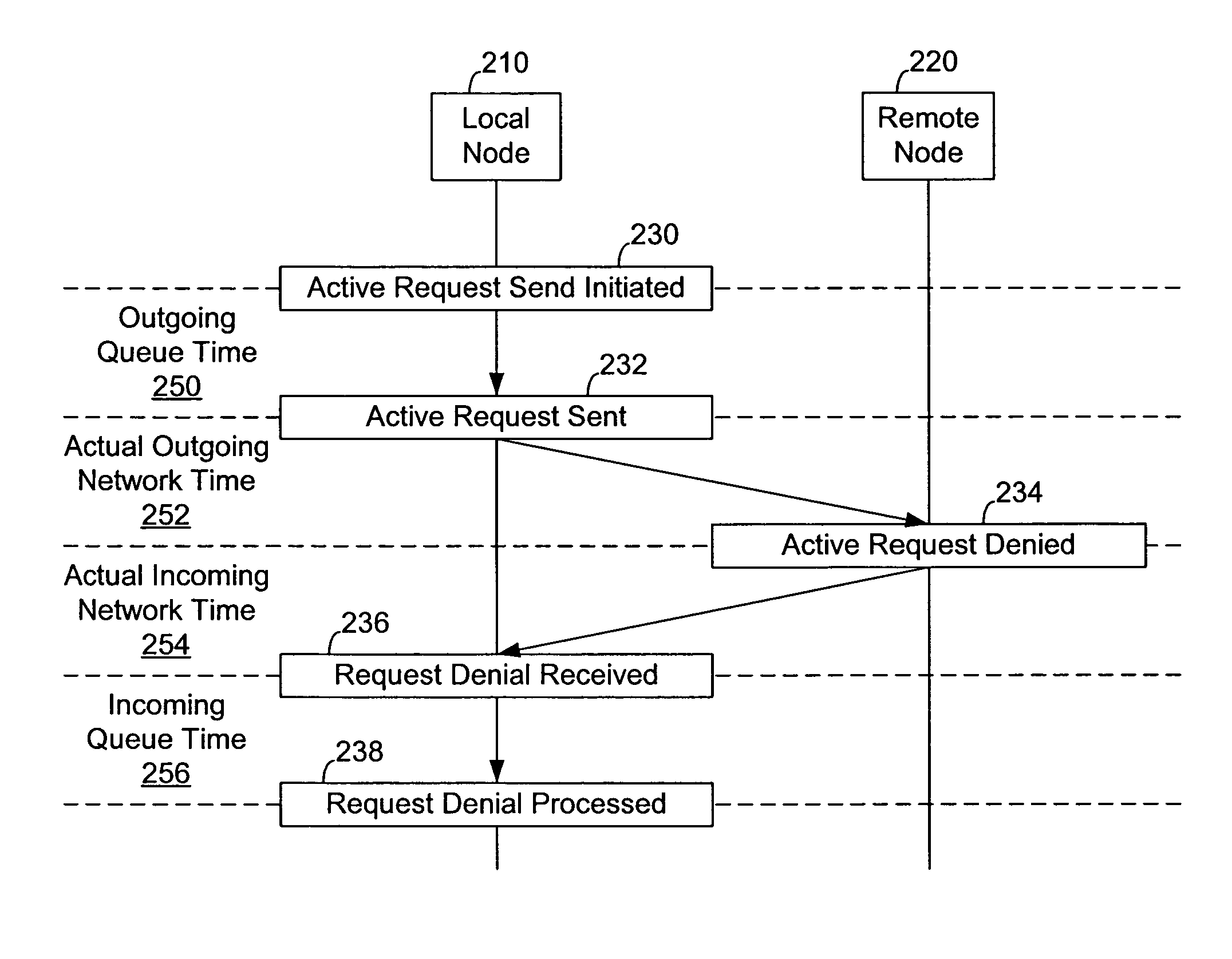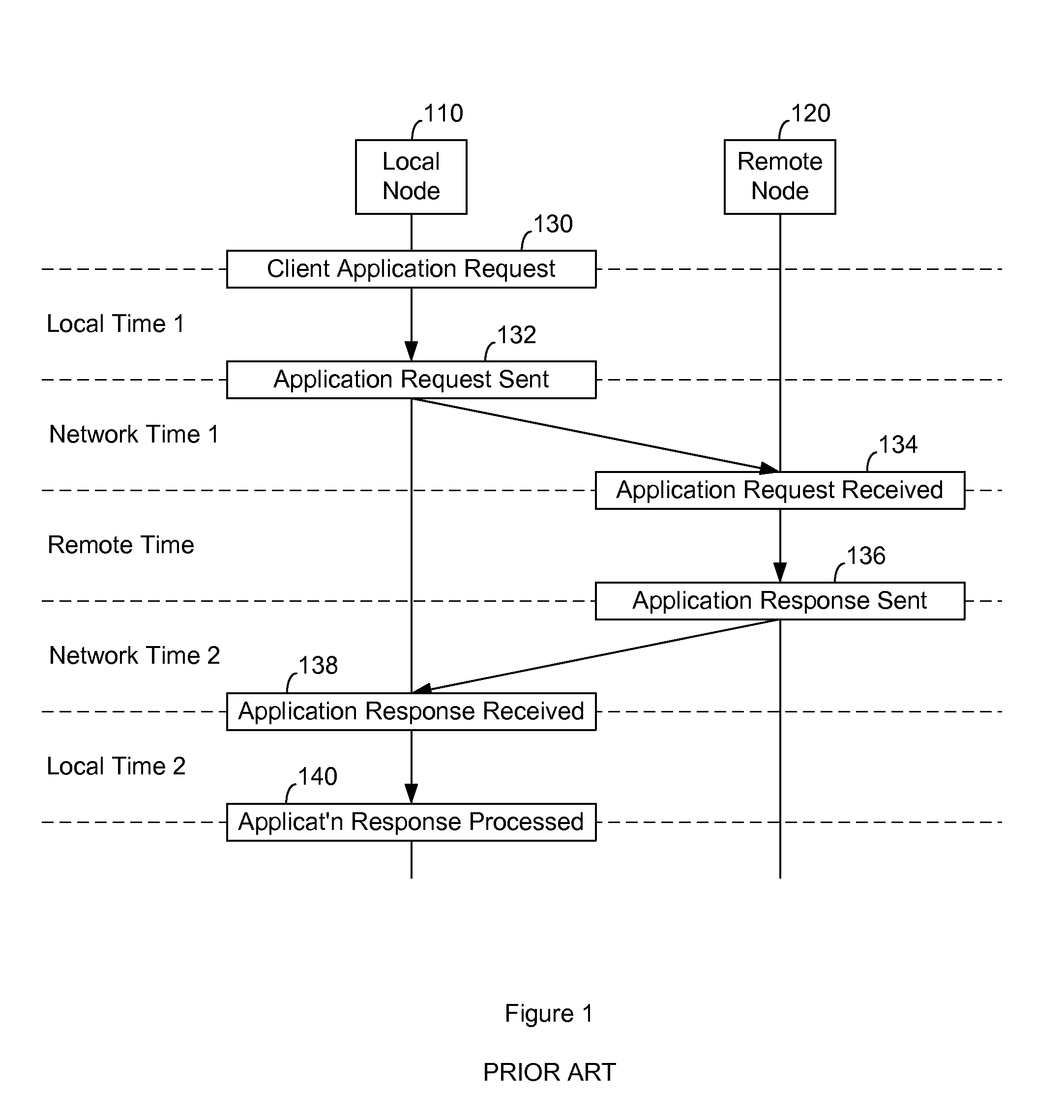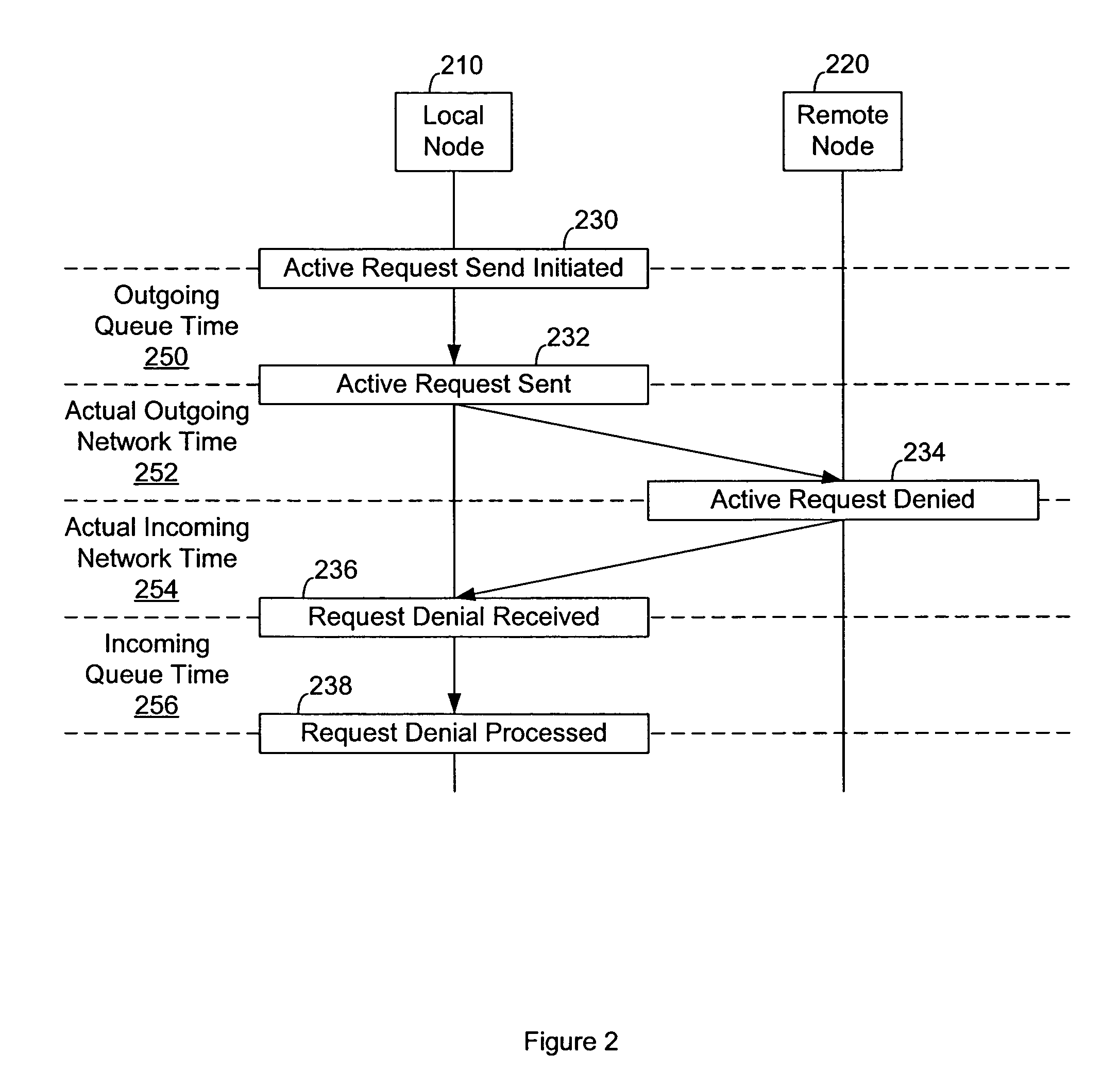System and method of active latency detection for network applications
a network application and active latency detection technology, applied in the field of network application monitoring, can solve the problems of difficult to identify whether latency is caused by the client system, the network, or the remote server, and difficult to deploy two capture agents,
- Summary
- Abstract
- Description
- Claims
- Application Information
AI Technical Summary
Benefits of technology
Problems solved by technology
Method used
Image
Examples
Embodiment Construction
[0026]FIG. 2 shows the use of an active request to determine the local node queuing and network components of network application latency. Calculation of the local node and network components also enables calculation of remote node latency based upon comparison with application packet data. The local node 210 is the node generating the active request, such as a client computer system, workstation, or other computing resource. The remote node 220 receives and responds to the active request. The remote node 220 is a remote computing resource, such as a server, that is in communication with the local node 210 via a network.
[0027]An active request is a network request from the local node 210 to the remote node 220. Active requests are made on a periodic basis in association with a running application and a particular remote node or IP address. The active requests are calculated to generate a response by the remote node with minimal processing, thus minimal remote node time. Even TCP / IP ...
PUM
 Login to View More
Login to View More Abstract
Description
Claims
Application Information
 Login to View More
Login to View More - R&D
- Intellectual Property
- Life Sciences
- Materials
- Tech Scout
- Unparalleled Data Quality
- Higher Quality Content
- 60% Fewer Hallucinations
Browse by: Latest US Patents, China's latest patents, Technical Efficacy Thesaurus, Application Domain, Technology Topic, Popular Technical Reports.
© 2025 PatSnap. All rights reserved.Legal|Privacy policy|Modern Slavery Act Transparency Statement|Sitemap|About US| Contact US: help@patsnap.com



